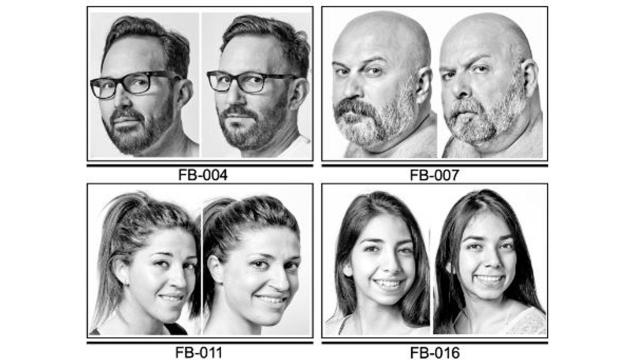It turns out that unrelated doppelgangers may have quite a bit in common beyond just twin faces. New research suggests that lookalikes with incredibly similar faces tend to share many genetic variants — variants that don’t just seem to shape their appearance but general aspects of their life. At the same time, other important influences, such as the microbiome, appear to contribute little to their symmetry.
Study author Manel Esteller, a geneticist and director of the Josep Carreras Leukemia Research Institute (IJC) in Barcelona, Spain, is interested in what makes people the way they are. In 2005, he and his colleagues published research showing that identical twins weren’t as identical as they appear at first glance. While they had the same basic genetic patterns, they differed noticeably in their epigenetics: changes in how our genes express themselves, which are caused by environmental or behavioural factors, such as smoking or age.
In their new research, published Tuesday in Cell Reports, Esteller’s team wanted to look at the other side of the coin — people who look so similar that they could be twins but aren’t actually related. To do this, they turned to the work of Canadian photographer François Brunelle, who has been documenting doppelgangers around the world as a long-running project. With his help, they were able to get in touch with 32 pairs of lookalikes who were willing to offer their time and a spit sample so that the researchers could take a peek at their DNA and other inner workings, such as the community of microbes living in their mouth.
Brunelle’s project relies on a subjective interpretation of people’s similarity. So to find the most identical non-identical people, Esteller’s team ran people’s photos through three different facial algorithms. Out of the original 32, 16 pairs were deemed to completely match by all three programs, and the researchers focused the bulk of their study on them.
In general, these pairs shared many single nucleotide polymorphisms (SNPs), which are the most common type of genetic variation in humans. Nine of the 16 were so genetically in-sync that they were considered “ultra” lookalikes. By contrast, however, the pairs’ epigenetics and oral microbiomes had relatively little in common.
“The results were that these lookalike humans had similar genetic sequences and are therefore like virtual twins, while their epigenetic and microorganism flora profiles differentiate them,” Esteller said in an email to Gizmodo. Interestingly, he added, this genetic similarity didn’t stop at facial appearance. Compared to non-lookalike pairs, for instance, doppelgangers were more likely to have similar levels of education, height, weight, and even smoking history.
The researchers took pains to make sure that the doppelgangers weren’t unknowingly closely related. While the pairs did tend to share the same country of origin or self-described ethnic background, they weren’t any more related to each other than pairs randomly selected from the same population, the team determined. Only one pair was suspected to possibly have had a common ancestor in the last several hundred years, while some pairs were living on wholly different continents.
“Thus, we think that the generation of some genetic similarities between these couples occurred by random chance,” Esteller said. “There are so many people on the planet that the system is repeating itself — the combinations of the genome are no longer infinite.”
It may make sense that facial doppelgangers would have many genetic similarities, but the findings could offer new insights on the ever-running debate of nature versus nurture, Esteller noted. While our genetics seem to play a leading role in shaping our face and other aspects of who we are, both this study and Esteller’s earlier work indicates that genes aren’t the be-all, end-all.
“Thus, nature is very strong, but nurture tunes up the genome a little bit,” he said.
There may be other far-reaching implications of this and similar research. If it’s true that our genes are so influential to facial appearance, then it could very well be possible to someday accurately reconstruct the unknown face of a criminal though DNA left at a crime scene, the team argues. Health-wise, it could also be possible that a person’s face would be able to provide clues about their genetics, including the presence of high-risk variants for diseases like diabetes or dementia.
These are two goals that Esteller and his team are interested in pursuing further. They also hope to expand their project to document more lookalikes and to study other factors that influence our lives, such as the transcriptome (how our RNA is expressed) and the proteome (the proteins that our cells actually make based on their genetic instructions).
